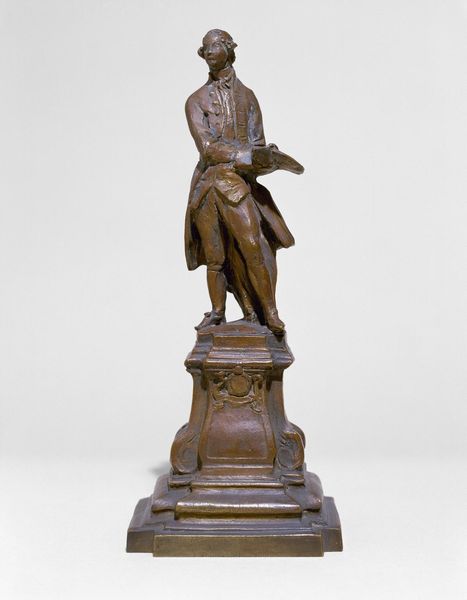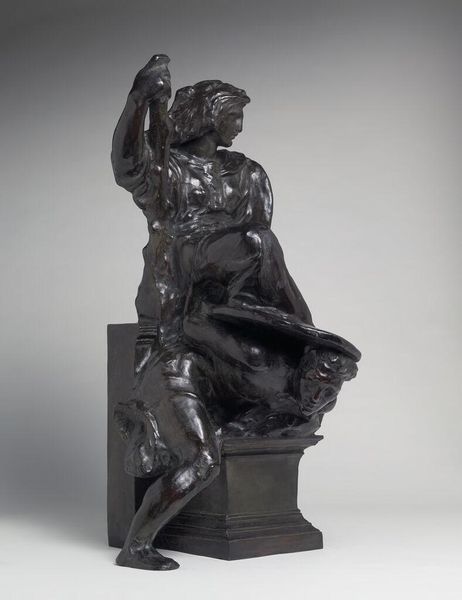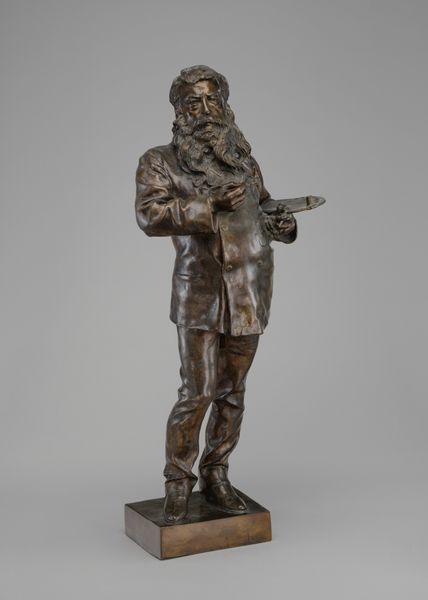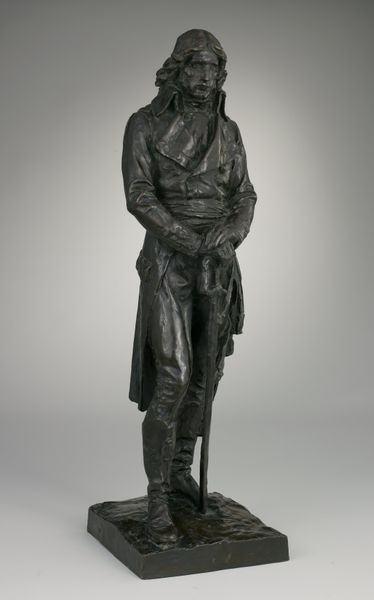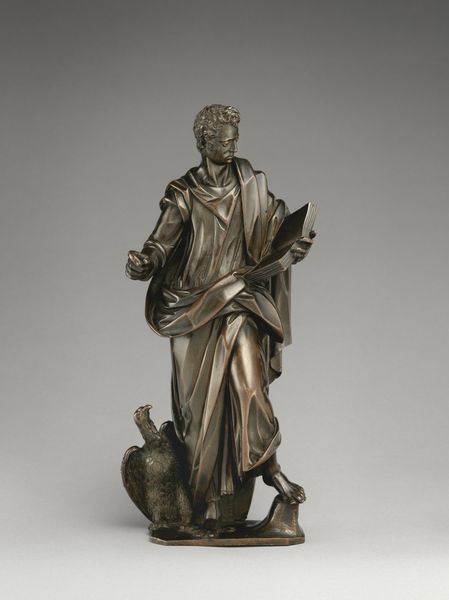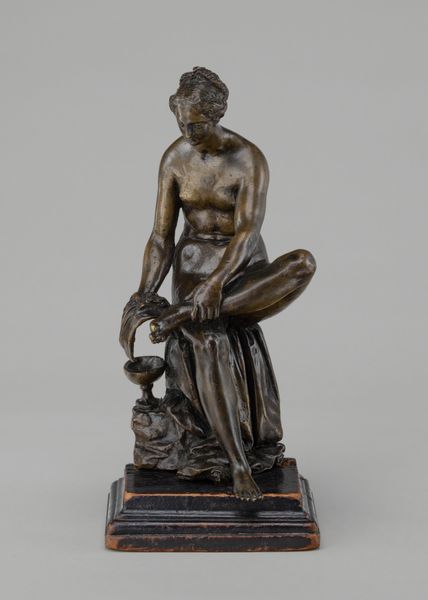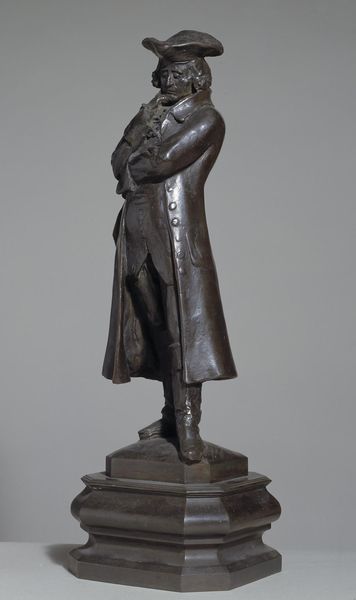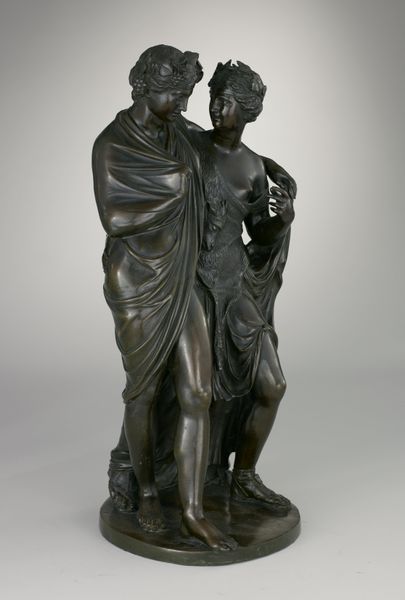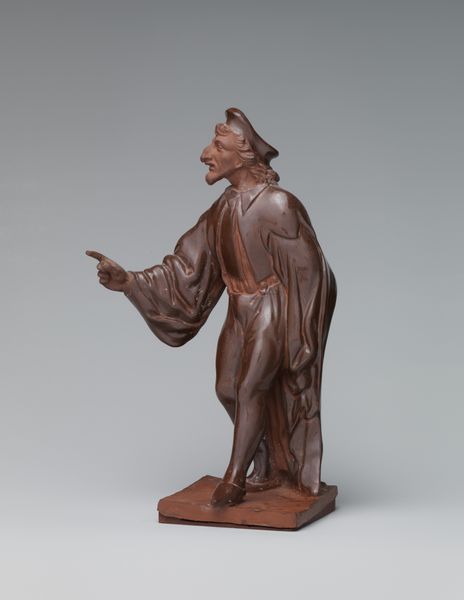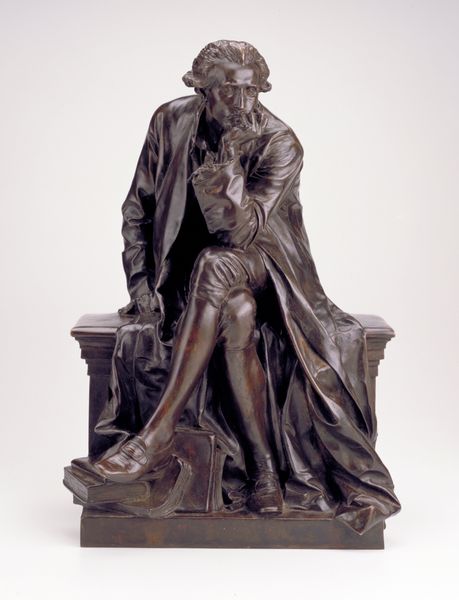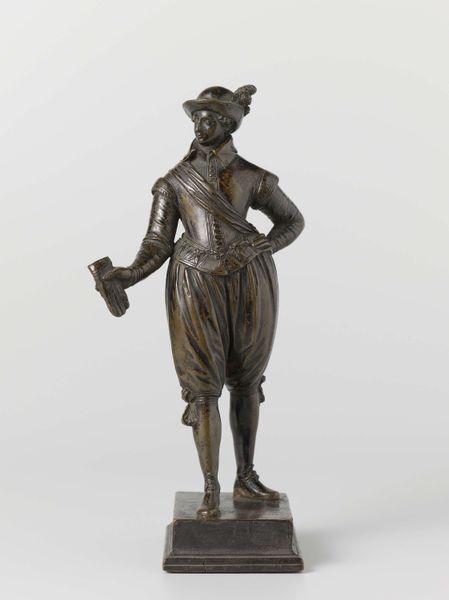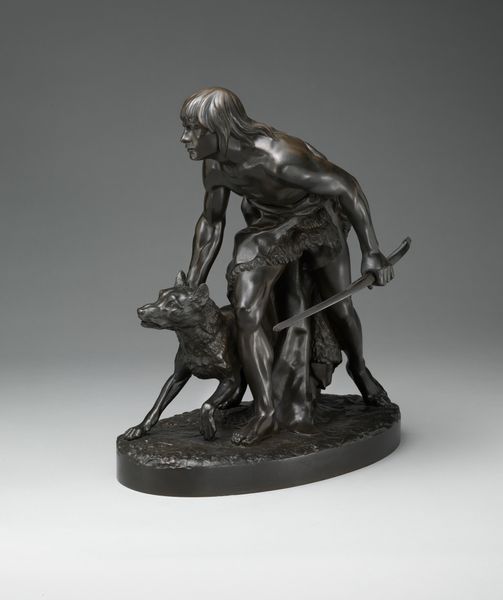
bronze, sculpture
#
portrait
#
baroque
#
sculpture
#
bronze
#
figuration
#
sculpture
#
decorative-art
Dimensions: Overall: 24 × 12 × 10 in. (61 × 30.5 × 25.4 cm)
Copyright: Public Domain
Curator: Look at the surface; this baroque sculpture by Sir Henry Cheere, crafted sometime between 1730 and 1765, is called “A young boy.” Editor: I'm struck by the elegance. It's hard not to immediately see a formal pose meant for the upper class. The fall of light on his jacket suggests a confident composition. Curator: The choice to portray him in bronze is really impactful here. Bronze as a sculptural medium has always carried immense social and political weight, since in its inception the mastery of metallurgy was used to produce arms for wars, control territories and thus power dynamics. Who gets a sculpture commissioned and made of bronze reveals much about status and wealth. Editor: The sheen certainly suggests wealth and status! The folds of his robe and the polished surface all signal not only luxury but incredible skill by the artisan, too. How would the child have perceived himself and his place, I wonder. Curator: That's where I immediately go! He’s styled to resemble a Roman noble, suggesting the parents probably had classicist aspirations for their progeny. And these portrayals were of course used for social power projection as well. In its time, that bronze would likely gleam with its new polish—a not-so-subtle indication of class, of wealth, of permanence. This wasn’t just about aesthetics. It was an extension of social and political power structures. Editor: Yes! Semiotically, that gleaming bronze finish can easily signify permanence but also aspiration to more power! You’re completely right: these signifiers would be hard to miss! And of course that robe casually thrown across his shoulders communicates a life of ease, without worry about hardship, unlike 99% of the population in the 18th century. Curator: So even on the surface, so to speak, we see those connections made in the artistic approach but also a narrative on race, class, and power. What looks like mere surface is an entire political discourse, which also implicates us, centuries later, in how we interpret these projections of colonial power. Editor: Very insightful, thanks! Looking at Cheere's bronze sculpture, beyond its elegance and its visual design, has really reminded me about how art of the 1700s always projects power, status and narrative to control populations.
Comments
No comments
Be the first to comment and join the conversation on the ultimate creative platform.
